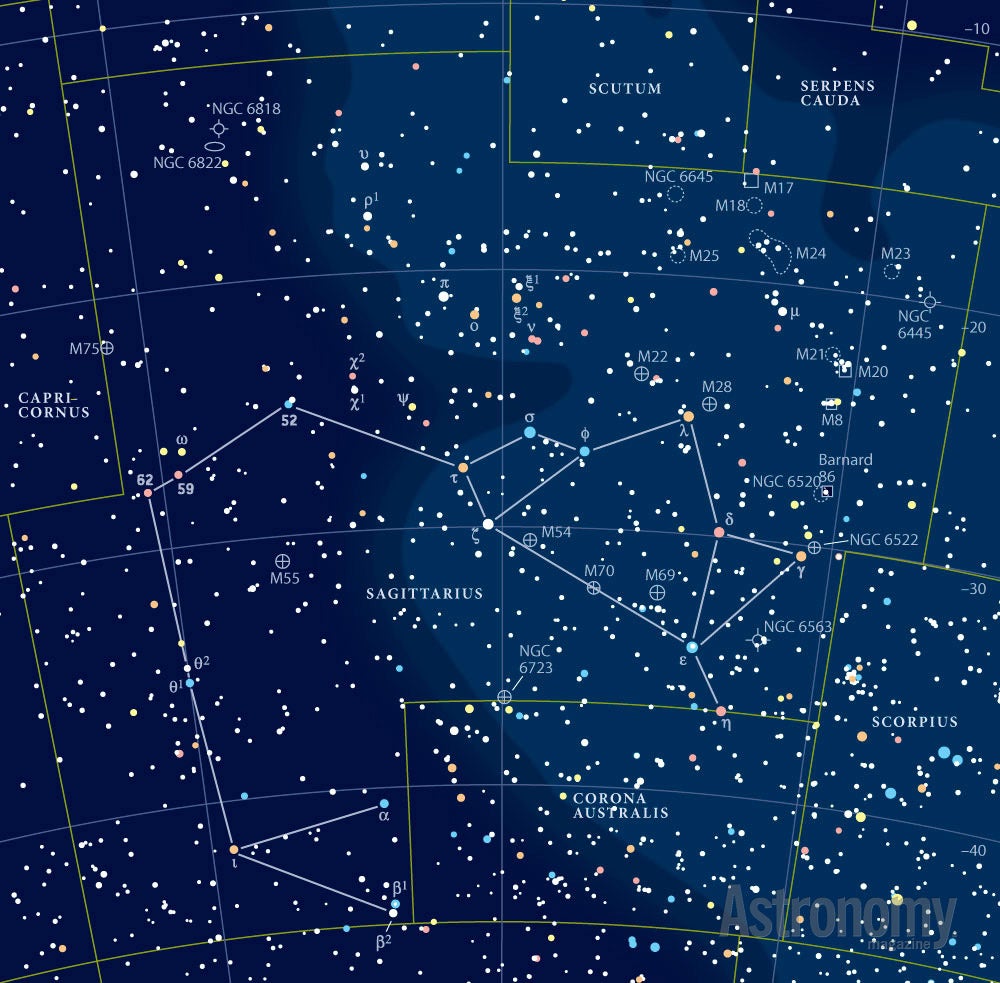
Expand your observing at Astronomy.com
StarDome
Check out Astronomy.com’s interactive StarDome to see an accurate map of your sky. This tool will help you locate this week’s targets.
The Sky this Week
Get a daily digest of celestial events coming soon to a sky near you.
Observing Talk
After you listen to the podcast and try to find the objects, be sure to share your observing experience with us by leaving a comment at the blog or in the Reader Forums.
Each week, Astronomy magazine Senior Editor Michael E. Bakich, a master at explaining how to observe, posts a podcast about three or more objects or events you can see in the sky.
Targets for July 5–12, 2012
Small telescope: Globular cluster NGC 6541
Large telescope: Planetary nebula NGC 6563
Large telescope: Irregular galaxy IC 4662
Crowning glory
This week’s small-telescope target is NGC 6541, a magnitude 6.1 globular cluster in the small constellation Corona Australis the Southern Crown. Amateur astronomers also know it as Caldwell 78.
You’ll find this nice object 4° west-northwest of magnitude 3.5 Alpha (α) Telescopii. Through a 6-inch telescope, you’ll see a circular glow 13.1′ in diameter made of unresolved suns. Double the aperture and move to a magnification of 200x, and more than 100 stars will pop into view, although stars in the core remain tough to separate.
NGC 6541 has an irregular outer boundary where thin dark lanes impinge on the outer halo. Just 21′ to the northwest of the cluster lies magnitude 4.9 SAO 228708.
Subtle planetary
This week’s first large-scope object is planetary nebula NGC 6563 in Sagittarius the Archer. To locate it, point your telescope 2.5° west of magnitude 1.8 Kaus Australis (Epsilon [ε] Sagittarii).
NGC 6563 won’t appear bright. It glows softly at magnitude 11.0. Helping its visibility somewhat, however, is the fact that it measures only 48″ across.
Through an 8-inch telescope at a magnification of 200x, this nebula shows a pale disk. A 14-inch scope reveals that the outer edge is ever so slightly brighter.
A nebula filter (such as an Oxygen-III) really helps, as does increasing the power as high as sky conditions allow. Rather than round, this planetary shows a slight oval shape inclined northeast to southwest.
Faint but easy to find
This week’s second large-telescope target is irregular galaxy IC 4662 in the southern constellation Pavo the Peacock.
Like our previous object, NGC 6563, this galaxy isn’t bright. It tops out at only magnitude 11.3 and measures 3.7′ by 2.5′. Again, the fact that it’s not huge keeps its surface brightness relatively high and will help you to see it. At least it’s easy to find, though.
Point a 10-inch or larger telescope at magnitude 3.6 Eta (η) Pavonis, and you’ll find our next target just 10′ to the star’s northeast. Because Eta’s brightness overwhelms that of IC 4662, first select an eyepiece that gives a magnification of 200x or more. Then move just the star out of the field of view, and you can begin looking for details in the galaxy.
A large stellar association that contains two emission nebulae dominates the appearance of this dwarf galaxy. Through the eyepiece, the association reveals itself on the northeast side as a bright spot in an otherwise featureless haze.









